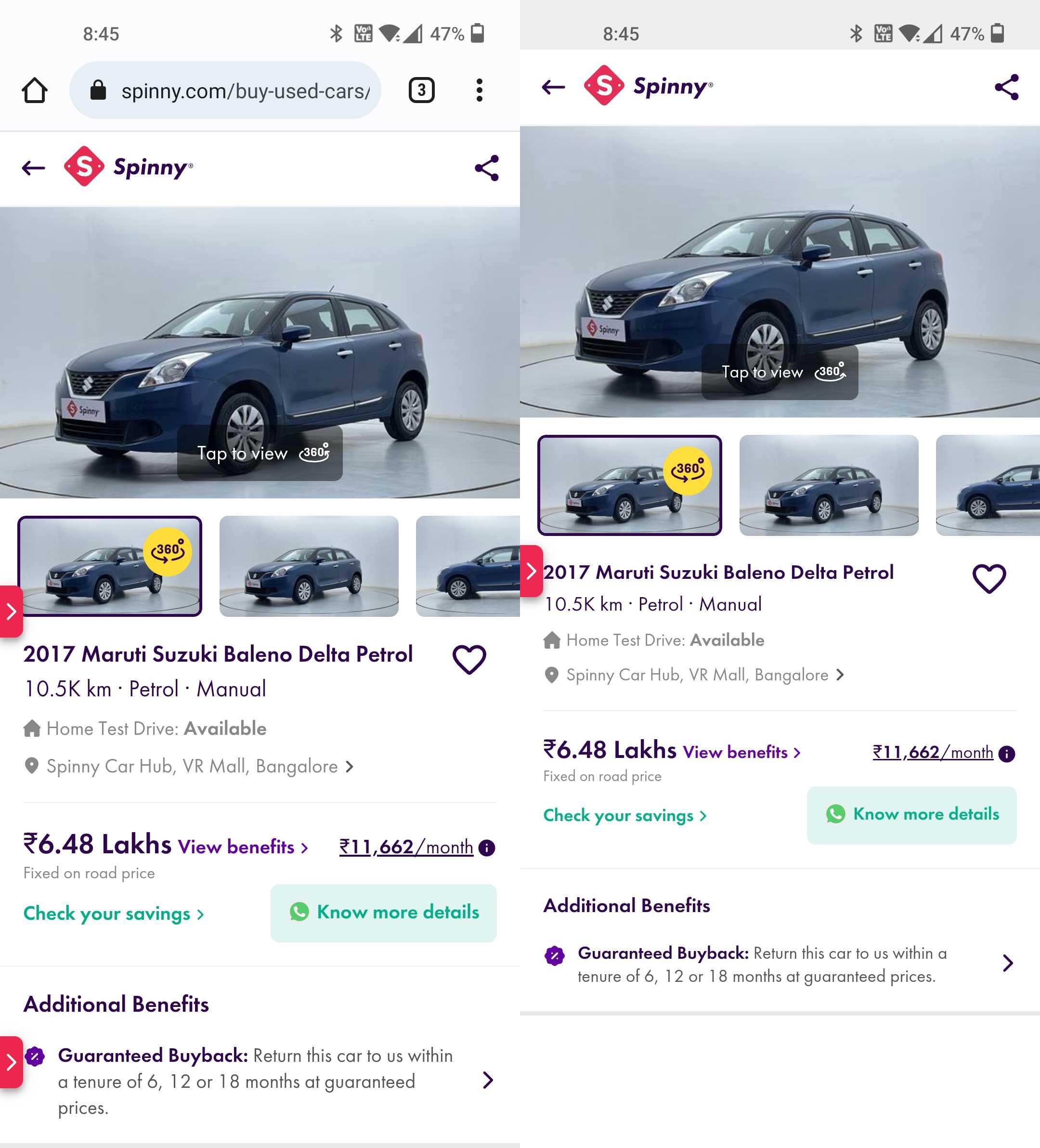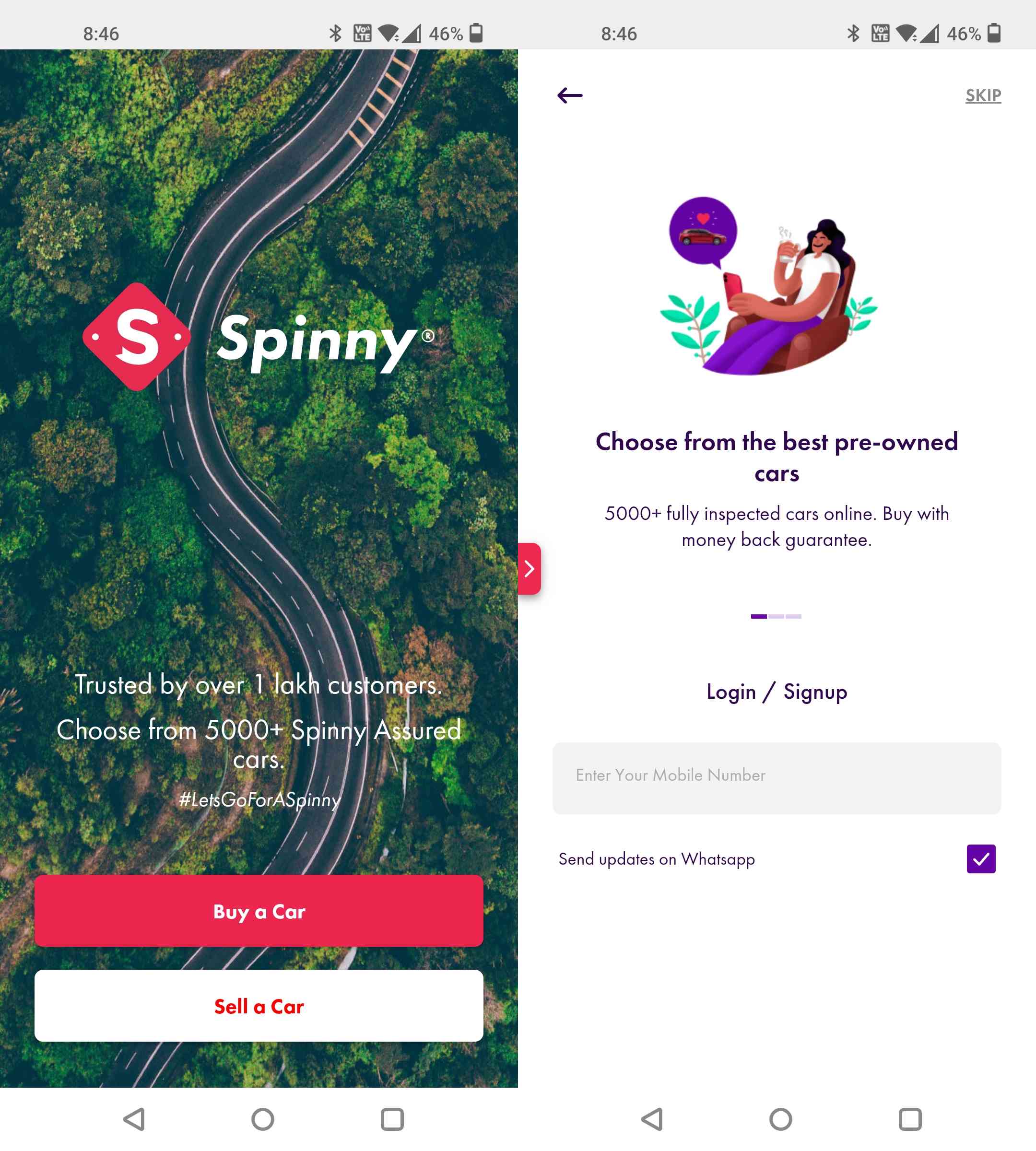
I was on my way to being mostly indifferent to Spinny’s new ad that features Sachin Tendulkar and where they take the emotional route to showcase the journey of a family as they plan to buy their first car – a used car, of course, from Spinny (as against a new car). It’s a sweet ad, but also largely predictable.
But then, the call-to-action at the end of the ad caught my attention more than it should.
No, it wasn’t anything ground-breaking 🙂 It was just ‘Download the Spinny app’.
We have, after all, been adequately primed to ‘download this’ or download that’ over the years. And ‘Download CRED’ has almost become meme material.
But the reason why I was drawn to Spinny’s call-to-action was when I wondered about the use-case for a used-car service’s app being on our phones.
Now, it’s true that most of our phones are equipped with more storage space than 5-10 years ago, and also that the mobile data speeds have considerably improved in recent times that allow very fast downloads of new apps when needed.
But how essential is it for a brand to ask people to download the app when the use-case/need is largely one-time? Consider how often you may buy or sell a car. Once every 4-5 years, if not more, realistically? Why would you need the brand’s app for this? And how many used car apps would you need to install to compare prices? Wouldn’t it be easier to check them and compare prices on the web version, either the mobile web or desktop/laptop web?
I got curious about Spinny’s call-to-action and checked out the ads of other used car brands.
Here’s a 2020 ad from Cardekho. The call-to-action? Download the app now! Every scene of Cardekho in the ad is that of the mobile app, not the mobile website!
And here’s a new ad from Cars24 that features Dhoni. The call-to-action? ‘Download the Cars24 app’!
On the other hand, here is OLX Autos’ new ad campaign from late 2021. The call-to-action? ‘Visit olxautos.in’ and no mention of the app!
I then wondered which other industry segments involve such limited/one-time use-case? How about insurance? After all, you buy insurance once and then pay a premium once every year. That doesn’t demand you need the app, right?
But here’s ACKO’s ad, with the ‘download the ACKO app now’ call-to-action!
How about buying/selling/renting homes? I’d assume this is a category that would be used even lesser often than used cars… unless you are a real estate broker, that is.
Here’s Housing’s ad featuring Manoj Bajpayee, from last year. For a brand that literally has a .com right in the name, the call-to-action is ‘Download now’!
Now, it makes perfect sense for high-touch/high-usage services to ask people to download their apps. Examples include:
- Cab hailing services like Ola and Uber
- Food delivery services like Zomato and Swiggy
- E-commerce stores like Amazon and Flipkart
- Banks
- OTT platforms
- Digital wallets or payment services like Paytm and Phonepe. Even the famous ‘Download CRED’ makes sense since the usage is more frequent – to pay monthly credit card bills, using the rewards and so on.
Along with social media platforms and email, we may be using these services fairly frequently on a daily or weekly basis. But services that we may ideally use once every 1 year, or 3-5 years (if not more) don’t really need to push their apps to us over their websites. Unless there is something in the app that is over and above the website, or if the apps prove to be useful on a more frequent basis.
For example, consider this new ad for M&S in the UK, made in-house. The entire premise is to pitch the M&S app to us, but with enough reasons on why should download and install the app. M&S is also a full-fledged e-commerce store with multiple product categories, but despite that, they have considered convincing us that installing the app can be a lot more beneficial and the ad demonstrates those use-cases!
I also looked at the Spinny app and website experience. At the outset, both are identical!

Thankfully, the app, once installed, does not force you to be a user, log in and only then show the product. You can skip the registration and browse the product even without being a user.

Having worked in an e-commerce firm (Flipkart), I fully understand the value a company/brand can get if people installed their apps instead of simply browsing them on the web. In-app usage sends a lot of personalized signals back to the company that can be further used smartly in assorted communication and personalizing the app’s features or services. Also, apps allow for push notifications, something that mobile websites do not. So yes, from the brand’s point of view, there are benefits to insist on app install as the call-to-action, but they also need to think through this from the users’ point of view by answering the, ‘why would a user want to install our app if the usage is going to be really sparse or occasional? We are not gmail, after all!’
The difference, to use the offline experience, is like this: a stranger walking into the store, browsing and buying/not buying anything vs. a person known to the store owner walking into the store, browsing and buying/not buying anything. In the former, the stranger remains a stranger to the store owner and she can only get an aggregate of user behavior. But in the latter, the store owner is able to understand per-user behavior that lets her think of more ways to bring the individual users back.
Back in 2015, Flipkart and Myntra made a big show about going app-only, and killing both their web and mobile web versions!
I wrote a sarcastic post on that pointless move back then, using the analogy of a shop setting up a tent outside my home.
Since then, most e-commerce stores have gone back to having all 3 outlets – app, mobile-optimized web, and normal website. The last 2 help people browse while the first one generally needs to earn its install depending on how convincing its pitch is about the ‘why?’. Here, the frequency of usage usually helps the pitch better.
I also used the TV ads of leading e-commerce stores as a way to gauge the evolution of Indian e-commerce from desktop web to mobile, in 2014. The crux was simple – look at the ads and see what screens they showcase: desktop web or mobile web/app. You’d be surprised at how things evolved over a period of time, though some of the ads that I had embedded then are missing now (as also the brands themselves!).
These days, almost no brand shows desktop web screens in their ads. The default is either mobile web or mobile app.
But even if people don’t really audit the number of apps on their phone (since smartphone space is no more a constraint) from time to time to uninstall apps that they don’t seem to be using frequently enough, the installing of apps is still a larger entry barrier than ‘visit www dot’.
Also, Android started revoking all permissions from unused apps last year. So even if we don’t do this springcleaning of apps consciously, it is now being codified as part of the mobile operating system.
If the user experience on an app is exactly the same as a mobile-optimized website (and progressive web apps can deliver this so well anyway), wouldn’t it be prudent to offer that as a call-to-action in marketing communication, and upsell the app install based on specific benefits that could be communicated in the website, particularly for sparsely used services? For instance, ACKO could explain that having the app would make it easy to report an accident or seek breakdown assistance, as against going to the ACKO website and finding the necessary information.
Even if assuming that people install apps just to browse the service like they visit a website, wouldn’t such installs be fleeting too where people quickly scan what’s on store and perhaps uninstall it if they presume that the use case is not worth the app (which may be the case with services used once every year, once every 3-5 years)?
